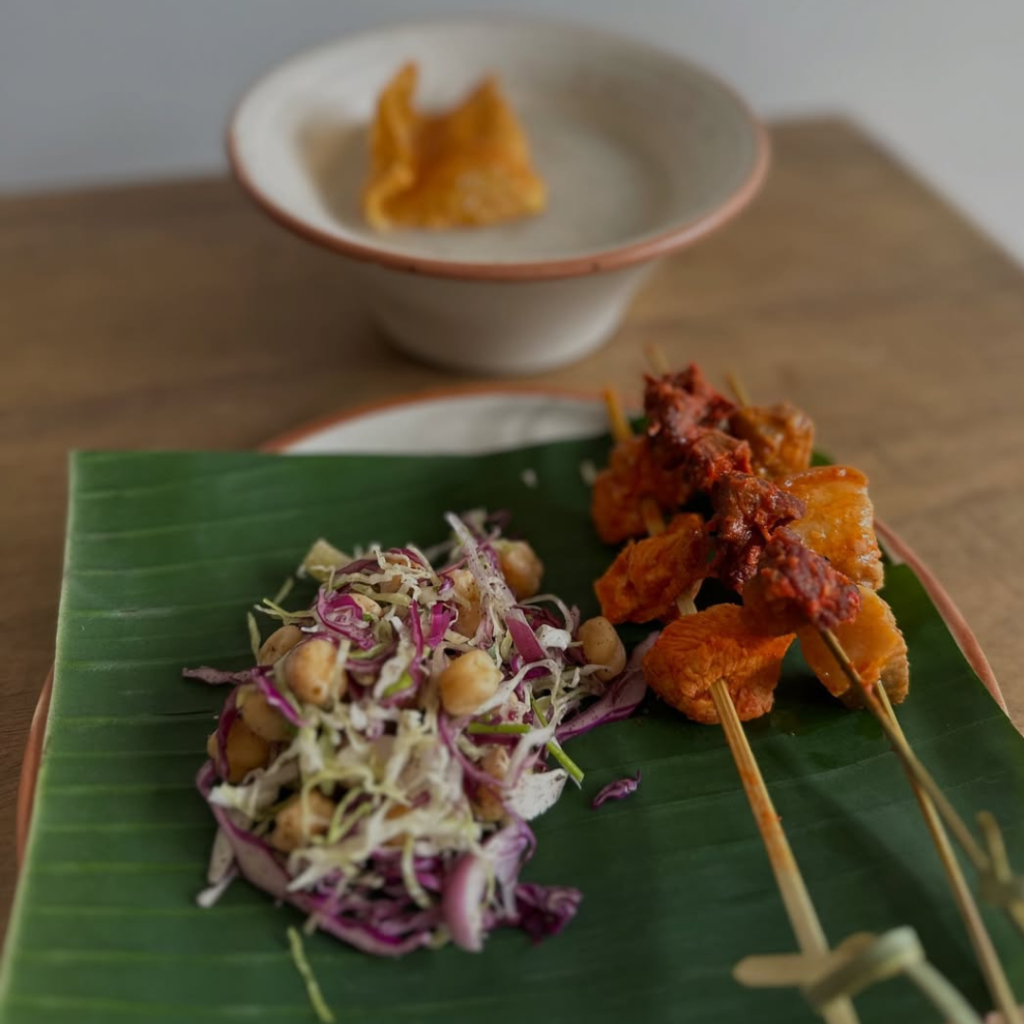“We treat every meal like a celebration,” said Kristi Kikon, a Naga home cook who runs Ohan Ki. This home-based kitchen serves authentic, premium-quality smoked meats, Naga pickles, and indigenous ingredients from the state.
Recently, Kikon organised a lunch for French fashion designer Christian Louboutin at the Heirloom Naga Centre on May 7. “My aim with the lunch was to spotlight our local produce and traditional ingredients while keeping the meal simple and comforting,” said Kikon in an exclusive chat with Outlook Traveller Eats.
She also spoke to us about Nagaland’s culinary richness and diversity, its produce and cuisine, and her own journey with cooking.
A Lunch Spread for Christian Louboutin
After a change in Louboutin’s travel plans, Kikon had to improvise the dinner she had curated and turn it into lunch. “My brief to myself was to keep the meal fresh and minimal, but something that encapsulates the essence of Nagaland,” said Kikon.
She began the meal with a perilla and chickpea salad, followed by a tribal trio skewer featuring smoked beef, pork, and chicken—each marinated in and draped with Naga spices and herbs. These skewers turned out to be the designer’s favourite dish from the spread.
For the main course, Kikon served an improvised version of her grandmother’s chicken amrusu—a traditional Ao dish that resembles rice congee or porridge, made with oyster mushrooms and chicken, and topped with crackling pork skin. “The amrusu is originally prepared with pork intestine, but I wanted to play it safe by using chicken,” remarked Kikon.

She ended the meal with a coconut-filled millet pudding. “He (Louboutin) had never tried millets before, which was exciting news for me, and my dish landed well,” said Kikon. She also brewed a floral Roselle tea to accompany the meal.
“I had also prepared a Naga thali with 6–7 delicacies as a tribute to my land and the 17 tribes that live here,” she added. However, she ultimately chose not to serve it.
The thali featured penjung han (black sesame curry), kholar (kidney beans) cooked in fermented fish, nziangdui chutney, king chilli and bamboo shoot pickle, chayote and mustard leaf stir-fry with axone, ayikibe (taro stew), and local rice. Kikon explained that four essential elements—rice, meat (pork, beef, or chicken), a spicy chutney, and greens—come together in an authentic Naga thali.
Nagas and Food: A Love Affair
“If there’s one thing that Nagas across all tribes love, it’s their food. We take it very seriously,” said Kikon. Traditionally, Naga kitchens were half the size of a basketball court, complete with a fireplace and built-in seating.
“As kids, we used to sit on a moda around the fireplace and enjoy our meals,” she recounted. She also described how each of the 17 tribes has its own distinct kitchen architecture and structure. While the ingredients remain similar across tribes, the cooking techniques differ, resulting in dishes that look and taste unique.
However, if one ingredient unites everyone in Nagaland, it’s pork. “We are all big-time pork lovers. It’s like a binding agent,” said Kikon. Pork is typically prepared and served with ingredients like soybean, black sesame paste, and bamboo shoots.

Another beloved dish that features across many occasions—and was also part of Louboutin’s lunch—is chicken amrusu—a favourite across the state served when someone is sick, to expectant mothers, and even during celebrations.
According to Kikon, Naga cuisine is rooted in technique and preservation. “Whether it’s fermenting or smoking, it requires a lot of patience and skill,” she said. Most Naga ingredients are seasonal, prompting people to preserve them for year-round use.
“People from my tribe (Lotha tribe) use bamboo shoots and fermented fish in almost everything. Since bamboo shoots are available only between May/June and August/September, we make sure to preserve them for the rest of the year,” Kikon said.
Naga food typically uses no oil and includes distinctive spices such as Sichuan pepper, red chilli powder, sumac, and mustard paste. It is rich in both meats and greens—like chayote, Sichuan pepper leaves, and michinga leaves.
It is a cuisine that relies on indigenous produce and their rich meats to curate simple and comforting preparations. “When we were given the opportunity to prepare the meal for Christian, we wanted to make sure that the essence of our cuisine reaches him and he falls in loved with it. We wanted to present the best we have,” concluded Kikon.

























